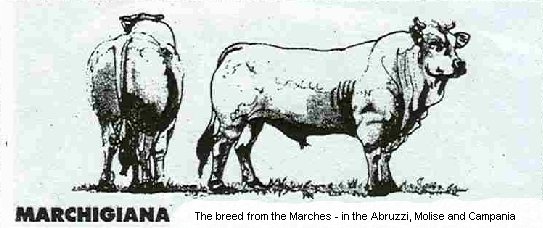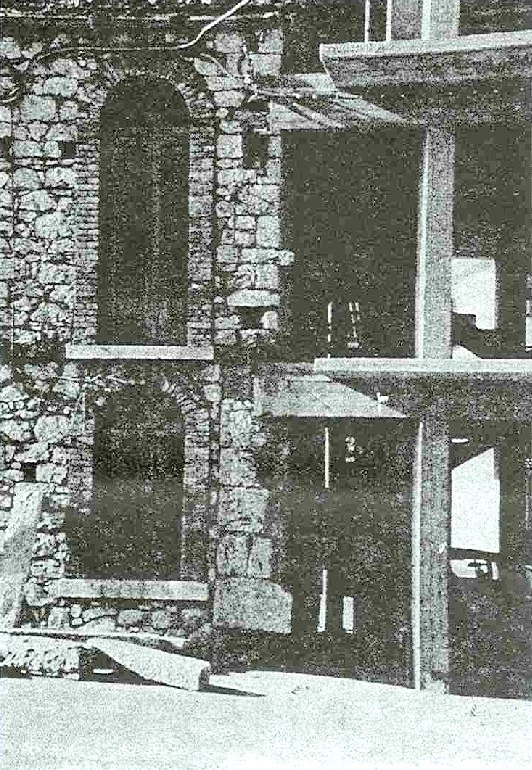|
No 0 1988? page 9 |
|
VITELLO D.O.C. [1] This is How to Raise It By Domenico Cianci Until about 15 years ago [2] veal was raised in the commune of Torricella,  as
in the surrounding communes, by simple, natural methods. In the early
period of its life, the animals were fed exclusively with their
mothers’ milk. In the second phase and right up until they were
butchered, which was usually at around eight months of age, the
animals’ diet included pre-soaked broad beans, flour and hay. Using
this system, the animals’ meat as well as tasting delicious was also
very tender. My idea is definitely not a return to this type of
rearing, since nowadays there are excellent feeds that can substitute
for the flour and broad beans, but what the veal bred in the territory
of our commune lack, however, is their mothers’ milk. as
in the surrounding communes, by simple, natural methods. In the early
period of its life, the animals were fed exclusively with their
mothers’ milk. In the second phase and right up until they were
butchered, which was usually at around eight months of age, the
animals’ diet included pre-soaked broad beans, flour and hay. Using
this system, the animals’ meat as well as tasting delicious was also
very tender. My idea is definitely not a return to this type of
rearing, since nowadays there are excellent feeds that can substitute
for the flour and broad beans, but what the veal bred in the territory
of our commune lack, however, is their mothers’ milk. The young veal is weaned at just six days old and fed with milk flour. This alters the animal’s development and at eight months it is just skin, belly and bones. It has to reach the age of 18 or 22 months before its belly disappears and the veal is mature enough to be butchered. As can easily be inferred, meat obtained in this way is not so tender. The reason our peasants wean the veal animals at six days is linked to the delivery of milk to the cheese factories, Del Giudice at Termoli and the Co-operative Castelfrentano. I do not know with precision the economic situation of those who collect the milk, but I have the impression that, given the price paid by the above-mentioned cheese-makers, this operation is not convenient for either the growers or the collectors. |
|
|
My idea therefore is as follows :- 1) raise a breed of cows specifically for meat 2) feed the young calves with their mothers’ milk 3) sell the calves raised in this way at a price of 1,000 – 1,500 (Lire) above that of the current market price 4) absorb the difference with a price at the Bank that leaves unchanged the butcher’s actual price margin 5) work the excess milk producing typical cheeses such as “cacciotta”[3] 6) create a controlled quality mark, guaranteed both by an Association of breeders, who undertake to respect the above-mentioned rules, and honest butchers, who will sell at a higher price only when the meat has been produced by peasants belonging to the Association. In my opinion, there are several advantages : security for the peasants who can sell their veal at reasonable prices; for the butchers a market that can spread much further than the local villages, even to tourists and to the many villagers who when they return for visits will leave taking with them steaks and slices of meat bought locally; the consumers will have an organic product free of additives or other devilishnesses; the meat will have that delicious, almost-forgotten flavour. Veal D.O.C. Breeders, Butchers! Let’s build together a D.O.C. Mark for meat and genuine cheeses of our zone. You’ll sell more, we’ll all be better off. |
______ FOTO QUIZ ______
Try to express it in ten
words, |
|
Translator's Notes: [1]
D.O.C. - (A term used in reference to food and wines)
Denominazione di Origine Controllata = Controlled Denomination of
Origin; (like the French term - appellation contrôlée). |
|
| Translation courtesy of Dr. Marion Apley Porreca | |
